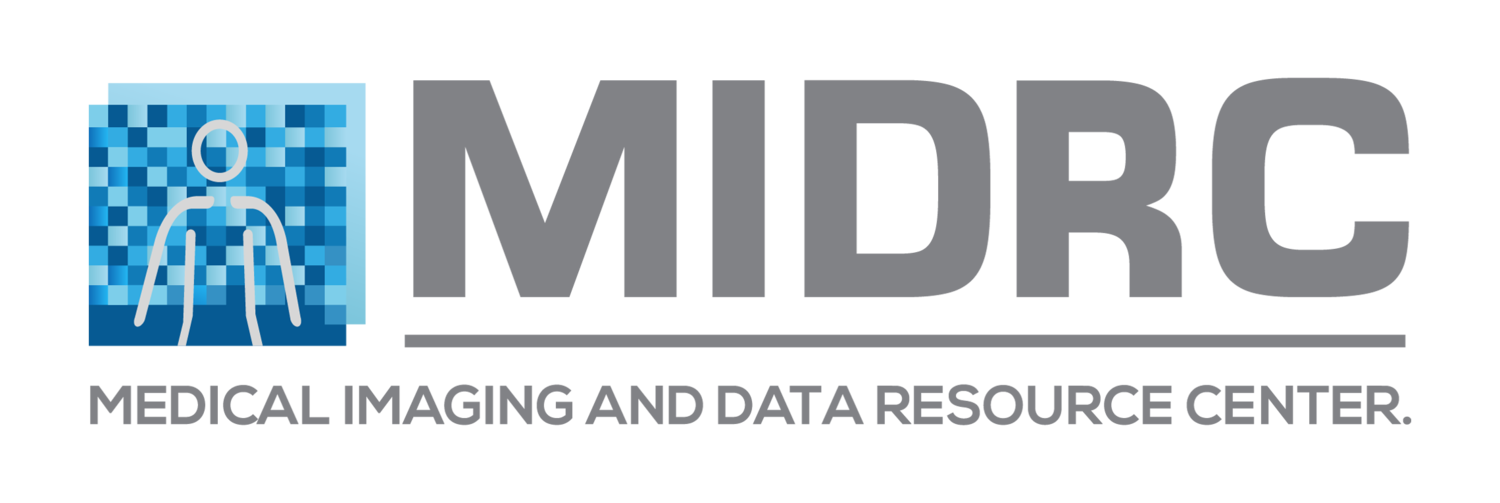Technology Development Project 2
Principal investigators: Michael Tilkin and Charlie Apgar
Create a real-world testing and implementation platform with direct real-time connections to health care delivery organizations.
Updated January 20, 2023
The purpose of this project is to address the need to connect in real-time with healthcare facilities and other data collection efforts. By taking advantage of existing networks of providers developed by professional, academic and commercial organizations, the MIDRC will leverage both centralized data collections as well as persistent connectivity at the facility level to create a hybrid-distributed approach to improve COVID-19 surveillance and diagnosis. With this project, MIDRC will be able to test and implement algorithms (e.g., those discovered and developed under MIDRC as well as developed by the broad imaging community) in a dynamic real-world setting.
Develop a secure mechanism for sites to share COVID-19 imaging data and associated clinical data.
Michael Tilkin (ACR) and Laura Coombs (ACR)
The ACR has created an easy mechanism for sites to submit COVID-19 related images and associated clinical data to the ACR component of MIDRC. Data goes through local processing including auto de-identification and validation according to MIDRC protocols as appropriate.
This project is currently working on (1) extending imaging study collection efforts to include at least 15,000 related to patients identified with as Long-COVID patients; (2) developing a harmonized clinical data dictionary that addresses traditional COVID-19 and Long-COVID cases; (3) conducting targeted collection and processing of imaging studies and related clinical data for subjects with cardiac system and neurological system involvement; (4) developing standards for deidentification of all imaging modalities employed in the diagnosis and surveillance of Long-COVID cases, which can then be disseminated to the broader research community.
Distributed data analysis for hypothesis testing and as a prototype for multi-site virtual clinical trials.
Etta Pisano (ACR)
Since patient privacy and legal concerns tend to prevent widespread data sharing, the ACR will also allow sites to participate in a virtual registry, allowing their data to remain local but part of the larger ACR registry and MIDC infrastructure.
This project was completed and is no longer active.
Artificial intelligence (AI) model creation and validation.
Jayashree Kalpathy-Cramer (UColorado Anschutz) and Laura Coombs (ACR)
Testing and validation of AI algorithms specific to COVID-19 patient diagnosis and treatment is a critical use of the data made available through MIDRC. Under this project, both centrally collected data as well as local data residing in the virtual registry has been utilized.
This project is working on leveraging the distributed infrastructure. Federated learning will be conducted to allow algorithms specific to the long-COVID population to be trained and/or validated on a diverse set of geographic, demographic, image acquisition and disease severity data for the creation and evaluation of more robust algorithms.
Real-time data feeds with collaborating registries.
Michael Tilkin (ACR) and Etta Pisano (ACR)
This project has created new means of linking other data collection efforts with MIDRC as an important overarching goal. In addition to this overall goal, the ACR has existing projects and clinical collaborators that incorporate imaging into the creation of real-time integrated datasets on COVID-19 patients in order to provide immediate feedback to clinicians.
This project continues to work with ACR collaborators to explore opportunities to integrate other COVID-19 data collection efforts with MIDRC; and leverage the common ACR infrastructure and virtual integration across MIDRC to allow other ACR collaborators an easy mechanism for sharing complete or partial data sets with MIDRC.
